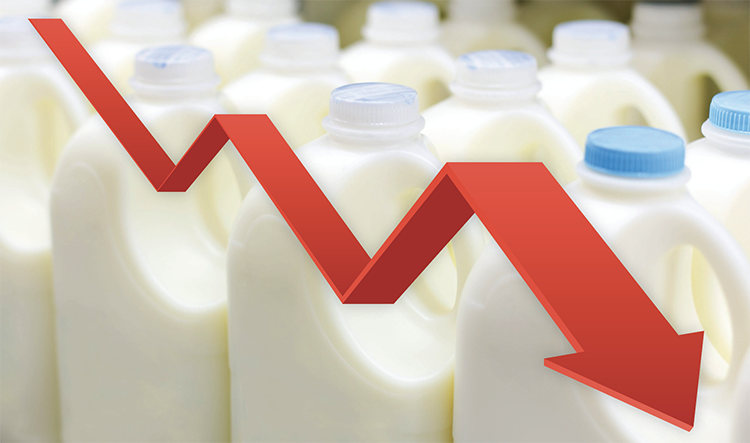

Here’s the reason: milk production and inventories of dairy products are growing across the major dairy exporters. In addition, Chinese imports have been trending lower and domestic demand inside the U.S. and EU is somewhat weak. In short, there isn’t much to get bullish about in the short term.
Milk’s movement
During the first half of 2022, milk production was well below year-ago levels across the U.S., the EU, and New Zealand. This helped push milk prices to record highs. Predictably, the high milk prices eventually encouraged more milk production across the major exporters. To be fair, this development has been aided by improved weather conditions.
In December, U.S. milk production was up 0.8% from last year, New Zealand was up 0.6%, and the EU (27 countries plus the United Kingdom) was up an estimated 1.9%. So, the milk production growth is actually on the mild side, but it has been more than enough to satisfy the market given the current weak demand.
Supply and demand
What we can say with some confidence is that the supply side will tighten in the second half of 2023. Milk prices have dropped in the U.S. and milk production is already slowing, from 1.7% growth in August 2022 to just 0.8% in December 2022. We could still see good growth in January and February, but I’m only forecasting U.S. production to be up 0.2% in the second half of the year given the milk price projections.
It will take longer for milk prices to come down in Europe, but the supply adjustment should be even bigger with production during the second half of 2023, down 0.7% from last year.
New Zealand is always a crapshoot depending on the weather, but with tighter environmental restrictions, we likely won’t see sustained growth. Where we are less certain about milk production is China. Their production in late 2022 was running 10% to 14% above a year ago. At the same time, farm gate milk margins are sitting at record lows, so we should see their production slow as well.
Demand is where the outlook becomes less certain. China is the largest importer, and we’ve seen imports trending down for more than a year. The removal of zero-COVID policies in the world’s most populated country is expected to boost dairy consumption. However, given how strong milk production is running in China, the better consumption may not translate into much import growth.
Demand inside the U.S. and EU is weakening, and it isn’t clear how bad it will get. U.S. domestic butter disappearance in 2022 was down about 7.1%, which is only the second time in 21 years that we’ve seen a decline.
Cheese fared better with 1.3% growth, but that is below average growth and we’ve heard anecdotally about demand weakening further in late December and January. Data will soon be available to confirm this potential development.
There aren’t any official statistics on consumption in Europe. However, we know that retail dairy sales are down in some of the largest European countries, and the anecdotal comments suggest demand is soft and inventories are building.
A potential rebound
While macroeconomic conditions are expected to weaken further in the first half of 2023, we often underestimate how much of an impact low prices will have on creating a demand rebound. While Chinese imports have been weak, the lower dairy prices are driving stronger imports by other countries. Imports by everyone other than China were up 10.2% from last year when reviewing November’s trade data. End users in the U.S. will take advantage of the lower prices to stock up on dairy products (especially powders) as well.
Short-term, it’s hard to get bullish. Production is growing across the major exporters. Stocks are expanding across the U.S., EU, and New Zealand. Chinese imports are weak. Demand inside the U.S. and EU is soft. There is nothing here that is supportive of the market other than the fact that some importers are already responding to the lower prices and purchasing more volume. It’s very possible we could see Class III and IV milk prices break into the $15 range for a month or two.
At the same time, we can be confident that the lower milk prices are going to slow milk production growth and buyers are going to continue to load up at these lower price levels. That gives us some hope for milk prices in the second half of the year. I’m forecasting Class III and Class IV prices above $21 for the fourth quarter. So, the first half of the year could be rough, but prices should improve in the second half as supply comes back into better alignment with demand.



